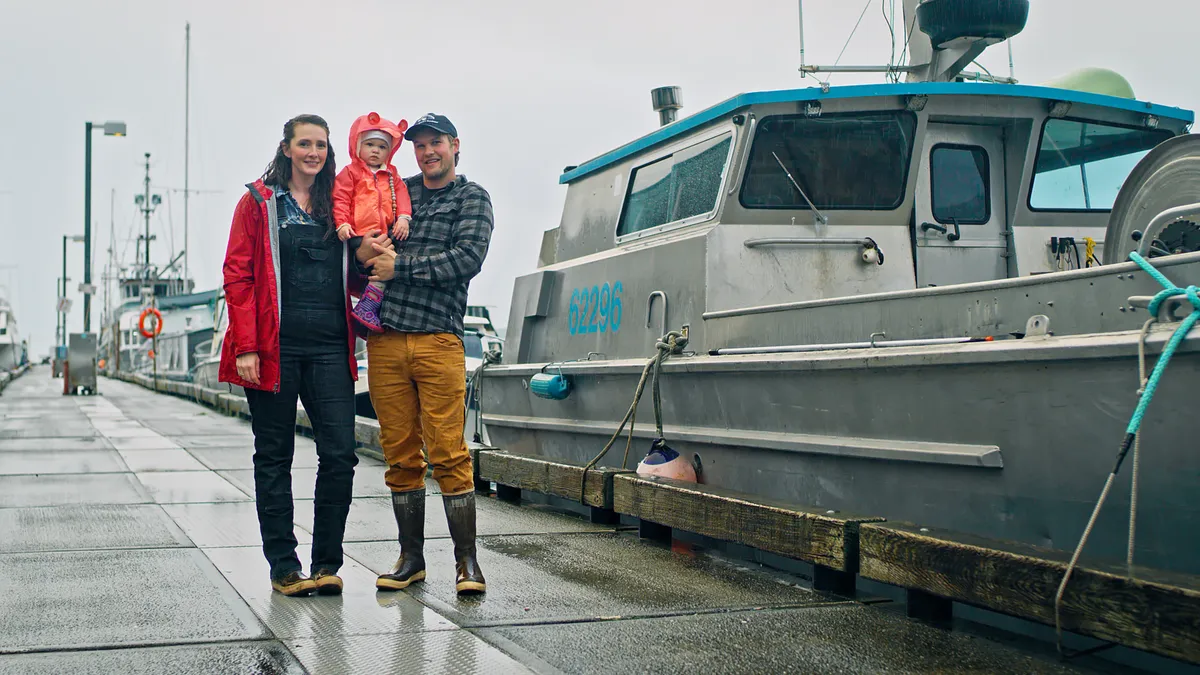Sustainability is trending, and for good reason. Consumers are increasingly concerned about where their food comes from and how it gets to their plates. Nearly 80% of consumers surveyed said sustainability was important to them and they are willing to change their habits to reduce environmental impact.1
Consumers are eating more seafood at home than ever before for a variety of reasons: They may want a healthy meal or one that is elegant or simple, easy to prepare, or affordable. Alaska seafood checks all of those boxes and also offers minimal environmental impact. Grocers can help consumers meet their sustainability, taste and health goals, supporting what's good for their bodies, communities and the planet, by promoting the benefits of Alaska seafood.
Healthy, versatile seafood offers options for all consumers
After the stress eating of 2020, consumers want to eat better in 2021.2 Consuming seafood helps with that. As a good source of lean protein, seafood is also filled with vitamins and nutrients that satisfy the belly and body, reduce inflammation and decrease the risk of stroke, heart disease, Alzheimer's and dementia.3 It's no wonder the USDA recommends that people eat seafood twice a week.4
Preparing seafood can be as simple as sprinkling lemon pepper seasoning on a piece of frozen cod and pan-searing it or throwing together a comfort meal of smoked salmon pot pie that's out of the oven in 30 minutes. With the variety of canned, fresh and frozen options, seafood can become a delicious ingredient or the main entree, fitting into every consumer's budget.
Alaska seafood's sustainability advantage
Along with better eating habits as the stress of the pandemic begins to ease, consumers are increasingly committed to sustainability.5Damon Colella, director of procurement and merchandising for FultonFishMarket.com, the largest online source of fresh seafood in the United States, says he's seen that increase in demand. "Today's customer is more knowledgeable, hungry for information and more vocal about their needs than ever before," he says.
Promoting sustainability is one of the best ways grocers can establish customer confidence and build a well-rounded assortment of products to meet the variety of customer tastes, he says. "If a grocer is to meet the needs of customers in this rapidly growing and crucial segment, their sustainable seafood offering must expand to meet these demands."
Sustainable seafood is the most environmentally efficient source of protein on the planet, says Megan Rider, domestic marketing director of the Alaska Seafood Marketing Institute. And Alaska seafood offers minimal environmental impact. "Alaska's seafood is responsibly managed, using a world-leading, science-based approach to help communities thrive for generations without compromising the ongoing health of the species or the health of the ecosystem," she says.
How seafood gets from the water to the plate
Alaska seafood is harvested from the icy oceans nearby, and is either processed on the vessel at sea or onshore, Rider explains. By law, the seafood must go through rigorous standards to ensure traceability at every step of the supply chain process. Alaska suppliers must follow applicable national and international laws governing food producers and the Alaska Seafood Marketing Institute Traceability Standard, which guarantees that every step of the food's journey can be traced, giving grocers and consumers confidence in the quality of the products. For those retailers looking to further verify Alaska seafood's sustainability, their commercial fisheries are independently certified sustainable by the Responsible Fisheries Management (RFM) Certification program, Rider says.
Beyond following regulations
Although Alaska suppliers follow regulations to ensure quality, their commitment isn't just to follow the rules; it's an investment they make in their future, Rider says. Wild seafood is one of Alaska's most precious resources, and the state goes to great lengths to ensure its continued abundance. "From fishermen to processors to scientists and law enforcement officials, sustainability is not only critical to Alaskans' livelihoods but a deeply ingrained tradition," she says.
The five pillars of Alaska seafood sustainability—families, communities, fisheries, full resource use, social responsibility and certification—tell the story of Alaskans' role in making sure sustainable seafood reaches plates around the world.
Not all seafood is harvested the way it is in Alaska. With the enormous number of species, fishing practices and regulations, it can be challenging for grocers to educate customers on sustainable options without overwhelming them with too much information, Colella explains. This is where Alaska seafood becomes an easy sell. "Customers feel confident knowing the seafood they are purchasing, which originated in Alaska, was caught in a sustainable manner with ethical catching methods," he says. "The fishermen were paid a fair wage while working in humane conditions, and the quality of the fish will be unparalleled."
One of the easiest ways for grocers to make sure their seafood is sustainable is to "ask for Alaska," Rider says. Every species that comes out of Alaskan waters is 100% sustainable, which enables grocers to make that claim with no hesitation. According to Datassential, this appeals to consumers: 78% say they would choose seafood over other protein sources if it were sustainably sourced, and 76% say the Alaska seafood logo signals sustainability.6
When grocers use the Alaska seafood logo while featuring the seafood, they convey critical sustainability and ethical sourcing standards, Colella says. "These are concisely messaged to the customer, providing answers and building confidence in their buying decision."
- "Research Insights: Meet the 2020 Consumers Driving Change." Ibm.Com, 2020, www.ibm.com/downloads/cas/EXK4XKX8
- Krawiec, Sebastian. "FMCG Gurus Announces Its Top Ten Trends for 2021." Nutritional Outlook, 20 Dec. 2020, https://www.nutritionaloutlook.com/view/fmcg-gurus-announces-its-top-ten-trends-for-2021
- LaMotte, Sandee. "Choose Anti-Inflammatory Foods to Lower Heart Disease and Stroke and Stroke Risk, Study Says," CNN, 2 Dec. 2020, edition.cnn.com/2020/12/02/health/anti-inflammatory-foods-heart-disease-wellness/index.html
- "Dietary Guidelines for Americans 2020–2025." Dietary Guidelines for Americans 2020–2025, U.S. Department of Agriculture and U.S. Department of Health and Human Services, Dec. 2020, www.dietaryguidelines.gov/sites/default/files/2021-03/Dietary_Guidelines_for_Americans-2020-2025.pdf
- "GWI Coronavirus Research May 2020." Global Web Index, 2020, www.globalwebindex.com/hubfs/1.%20Coronavirus%20Research%20PDFs/GWI%20coronavirus%20findings%20May%202020%20-%20Multi-Market%20Research%20(Release%2010).pdf?utm_campaign=Coronavirus%20hub&utm_source=Coronavirus-whitepaper-10&_ga=2.86331544.187439559.1617199015-1592484794.1617199015
- Datassential 2021 Study: Alaska Seafood at Retail










